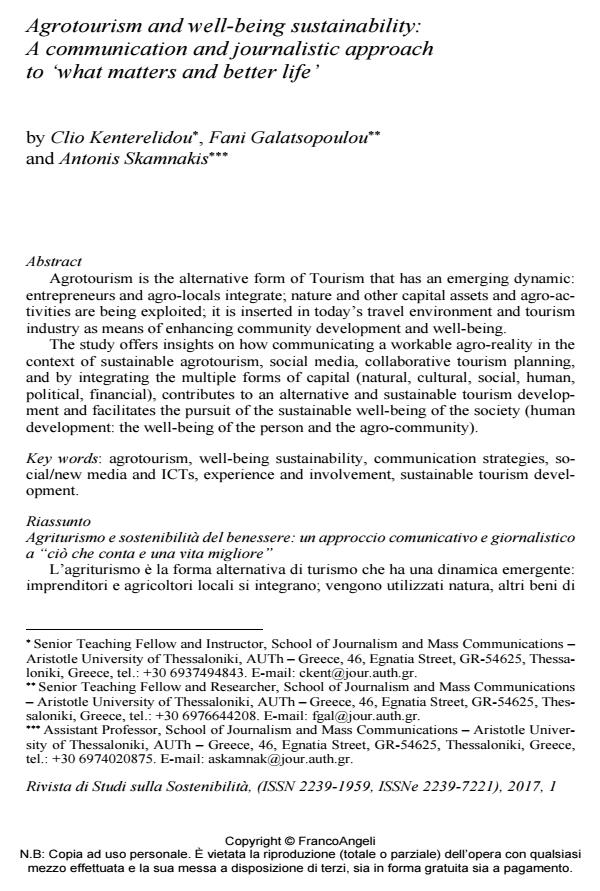Agrotourism and well-being sustainability: A communication and journalistic approach to ‘what matters and better life’
Journal title RIVISTA DI STUDI SULLA SOSTENIBILITA'
Author/s Clio Kenterelidou, Fani Galatsopoulou, Antonis Skamnakis
Publishing Year 2017 Issue 2017/1
Language English Pages 19 P. 129-147 File size 214 KB
DOI 10.3280/RISS2017-001009
DOI is like a bar code for intellectual property: to have more infomation
click here
Below, you can see the article first page
If you want to buy this article in PDF format, you can do it, following the instructions to buy download credits

FrancoAngeli is member of Publishers International Linking Association, Inc (PILA), a not-for-profit association which run the CrossRef service enabling links to and from online scholarly content.
Agrotourism is the alternative form of Tourism that has an emerging dynamic: entrepreneurs and agro-locals integrate; nature and other capital assets and agro-activities are being exploited; it is inserted in today’s travel environment and tourism industry as means of enhancing community development and well-being. The study offers insights on how communicating a workable agro-reality in the context of sustainable agrotourism, social media, collaborative tourism planning, and by integrating the multiple forms of capital (natural, cultural, social, human, political, financial), contributes to an alternative and sustainable tourism development and facilitates the pursuit of the sustainable well-being of the society (human development: the well-being of the person and the agro-community).
Keywords: Agrotourism, well-being sustainability, communication strategies, social/new media and ICTs, experience and involvement, sustainable tourism development.
- A systematic literature review on the use of big data for sustainable tourism E. Rahmadian, D. Feitosa, A. Zwitter, in Current Issues in Tourism /2022 pp.1711
DOI: 10.1080/13683500.2021.1974358 - Joint consideration of molybdenum and tourism leads to a new research field Dmitry A. Ruban, Anna V. Mikhailenko, Natalia N. Yashalova, in Discover Chemistry 41/2024
DOI: 10.1007/s44371-024-00050-6
Clio Kenterelidou, Fani Galatsopoulou, Antonis Skamnakis, Agrotourism and well-being sustainability: A communication and journalistic approach to ‘what matters and better life’ in "RIVISTA DI STUDI SULLA SOSTENIBILITA'" 1/2017, pp 129-147, DOI: 10.3280/RISS2017-001009